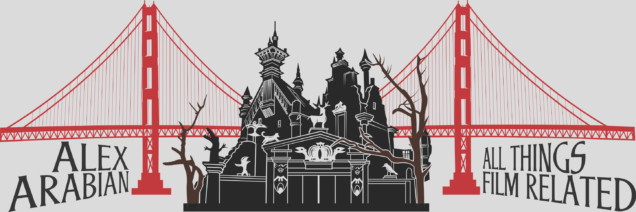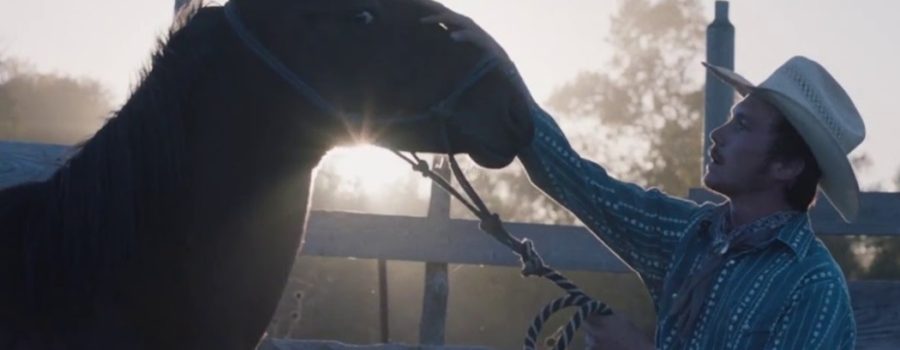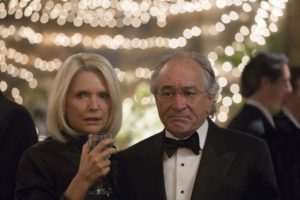[Published at Film Inquiry] Chloé Zhao recently won Best Director at the Film Independent Spirit Awards for her work in The Rider, a film she also wrote. She monumentally deserved it; her sophomoric feature film is a bonafide masterwork. Upon viewing The Rider, one most likely won’t even notice the fact that it was filmed entirely with a cast of non-actors. Each cast member is simply remarkable in their respective roles.
Brace yourselves for one of the year’s best films. If Zhao doesn’t find herself among the nominees next year for Best Director at the Academy Awards, then it would be a grave injustice. The Rider amazes and captivates for its entire 104-minute runtime.
The Harrowing Story
In The Rider, our main character Brady Blackburn (Brady Jandreau) is a young cowboy suffering from a near-fatal head injury after being bucked off of a bronco at a rodeo. As he tries to recover, his alcoholic father struggles to raise his mentally disabled sister, Lilly (played by Brady’s real-life sister, Lilly Jandreau) without their mother, who passed away. Brady is depressed that he can’t ride anymore.
His body isn’t functioning the same; he now has epilepsy, and he has partial complex seizures characterized by a clenching of his right hand. Although he is advised to never ride again, he starts training horses again. It’s exhilarating and rewarding to see Brady come out of his shell as he starts getting back into his routine and riding again.

source: Sony Pictures Classics
His family can’t afford their trailer, and without being able to make any money off of the rodeo, Brady can’t pitch in. So, he finds temporary work at a drug store. There aren’t many options for him, as he doesn’t have a high school education. His father, Wayne (Brady’s real-life father, Tim Jandreau), begins to sell things towards the third act of The Rider to make ends meet. When he sells the family horse (and Brady’s best friend) Gus, Brady decides to get a new horse, Apollo. He trains Apollo, a virtually untrainable horse with problems; they’re two peas in a pod – both stubborn and both injured, hindering what they respectively do best.
“I got hurt like Apollo did, but I’m a person, so I got to live.”
Unfortunately, when trying to escape, Apollo injures his leg on the barbed wire fence. Due to his gentle, kind nature, Brady can’t bring himself to put Apollo down, so his father does it. It’s a testament to Brady’s character in The Rider, which is defined by his actions. He visits his friend Lane Scott (played by Lane Scott) in the hospital regularly. Lane is a mentor and brother figure of Brady who suffered from a permanent brain and spinal injury during a rodeo. He treats his family with respect, protects his little sister, and keeps a positive attitude despite the adversity he’s faced.
Questionable Cowboy Values
Still, among cowboys, there is still a fair amount of toxic masculinity in The Rider. Brady’s friends represent an antiquated standard of “man.” In one scene when they’re all gathered around a camp fire, hanging out, one of them tries to explain that he’s had 10 concussions and he still goes back to the rodeo. Another says he broke his ribs, to which Brady replies that a brain is different than your ribs. They’re trying to convince him to return to the rodeo after he died because it’s “all the same to a cowboy, you ride through the pain.”
There is also flawed masculinity within Brady’s family. There is a recurring phrase throughout The Rider: “cowboy up.” Essentially, it means “man up,” or “tough it out.” We’ve all heard various iterations of these phrases before. His dad taught him these values, to hold in your emotions and never show that you’re hurt because it gives the notion of weakness. His dad is right about one thing, however, and that’s that Brady shouldn’t return to the rodeo. “You have to play with the card you’re dealt.” Wayne tells his son.

source: Sony Pictures Classics
There is certainly a paradox in cowboy values. Several, to say the least. Regarding animals, they revere horses immensely; they treat them with respect outside of the rodeo when they are their own, personal property for them to ride. However, inside the rodeo, they don’t care what happens to the horse. Rodeo horses are literally tortured with electric prods, spurs, and bucking straps for the sake of entertainment and to make cowboys look macho.
There is a disconnect between showing love to and connecting with an animal while also abusing it. And they ride these animals at what cost? The Rider makes the point that Lane, Brady, their friend with the 10 concussions, anyone who’s died trying to tame these wild animals didn’t need to get injured or die, and it certainly isn’t worth hurting these intelligent, kind animals for an adrenaline rush and the hastily fleeting feeling of superiority.
Zhao And Her First-Rate Team Hit A Home Run
The first visuals of The Rider are characterized by incredible slow motion close-ups of a horse, displaying its natural beauty; its strong stature, silky coat, layered mane, intelligent eyes, and its majestic gait. Zhao‘s blend of ultra-HD, slow motion, and a black backdrop give the image an empyrean, dream-like quality to it. This is how Brady views horses – as the elegant creatures that they are.
Zhao knows how to capture the sunrise at exactly the right moment in exactly the right frame in The Rider, elegantly shooting the bright moon rising over a dancing campfire, vast, empty canyons, Brady riding through the endless fields of grain, a lone windmill against the sunset with artistry. There are so many exquisite shots of the American Midwestern landscape, no review or amount of words can do Zhao‘s direction justice.

source: Sony Pictures Classics
Zhao‘s use of a handheld camera during certain scenes are wildly effective, as it makes character interactions seem more authentic. Furthermore, her use of flashbacks have a certain graininess to them like a home video; it’s almost as if to emulate a foggy memory of a given event. It’s the iPhone effect. Credit also goes to Zhao‘s cinematographer, Joshua James Richards, who has a stellar eye for lighting an image.
Composer Nathan Halpern emulates Zhao‘s meditative direction, crafting a Nick Cave and Warren Ellis-esque score à la The Assassination Of Jesse James By The Coward Robert Ford for The Rider. Editor Alex O’Flinn (The Kids Are Alright, A Girl Walks Home Alone at Night) creates a fluidity from gorgeous frame to gorgeous frame with seamless editing.
Conclusion: Watch Out For Chloé Zhao
They say that your second feature film is the hardest, because there is added pressure to back up your first film with an artistic statement of equal impact. I don’t think Zhao got that memo; she shows no signs of slowing down, following up Songs My Brothers Taught Me with the striking The Rider. There was so much thought put into every interaction in the dialogue, every character in the script, every placement of setting, every single shot of the film. For a cast of non-actors, or any cast, for that matter, these actors each give powerful turns in The Rider.
The Rider serves as a showcase for Zhao‘s multifaceted talents, has a searingly dramatic storyline with gripping themes and subtexts, and boasts an impressive ensemble of non-actors.
Did you like the naturalistic acting in The Rider? Are you excited to see more from Zhao?
The Rider will be released theatrically in the U.S. on April 13, 2018. For more information on its release, click here.
“The clock has run out on sexual assault, harassment and inequality in the workplace. It’s time to do something about it.” Read the Letter of Solidarity here. Make a donation to the legal fund here.








Leave a Reply
Your email is safe with us.